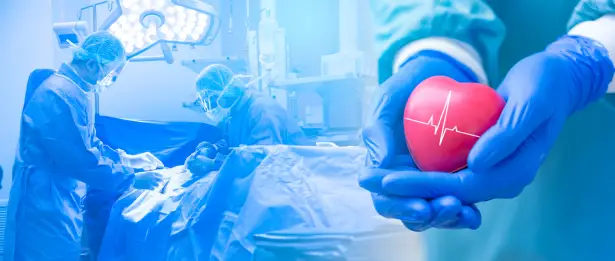Stem Cell Applications in Cardiovascular Surgery

Can Dying Heart Cells Be Regenerated?
Cardiovascular diseases, which are among the most common diseases in society, and heart attacks that develop as a result of these diseases significantly impair the quality of life of patients. Stem cell applications have become increasingly important in the treatment of heart failure that develops after a heart attack. When one of the coronary arteries is blocked, the heart cells it feeds begin to die within 20-30 minutes. If the artery is not opened, most of the cells die within 6 hours. Many clinical studies conducted in our country and all over the world have shown that there is scientific evidence that stem cells can reverse this process.
What is Stem Cell Therapy in Heart Failure?
When heart muscle cells die due to a heart attack, they are not replaced by new ones. Since the early 2000s, the ability of stem cells to repair diseased tissue has been recognized. This has opened a new era in stem cell therapy. Stem cell therapy has taken first place in heart diseases. The heart muscle is damaged to the point of heart failure after a heart attack. Stem cell therapy is used in the repair of damage to the heart muscle and in severe heart failure.
In patients who have had a heart attack, stem cells taken from the person's fat tissue are extracted and injected into the coronary artery. This treatment method can also provide new blood vessel formation and revitalize dead tissue. Studies have reported that the damaged areas in the patients' hearts completely regress within 6 months and the heart's beating power increases.
How is Stem Cell Transplantation Performed into Heart Tissue?
In stem cell transplantation into heart tissue, stem cells derived from fat tissue obtained from the person's own body, not from a relative or from outside, are applied. Therefore, there is no chance of the given cells not being accepted.
Stem cell transplantation is similar to the angiography method, and is transplanted into the heart tissue through a catheter entered and advanced through the groin vein without surgery. This procedure is performed through the heart artery or vein depending on the patient's current disease.
Another method is performed by heart surgeons during open heart surgery with multiple injections directly into the heart muscle.
The regenerative cells obtained from the person themselves provide treatment for many diseases as well as vascular occlusions. Medical treatments for this disease include medication, ozone or high pressure. Surgical intervention can be applied as a last resort, amputation (cutting the area with clogged blood vessels) or sympathectomy (cutting the sympathetic nerves).
However, instead of these methods, regenerative cell applications are emerging as a new and effective method for closing the wound and reestablishing circulation by encouraging new blood vessel formation.